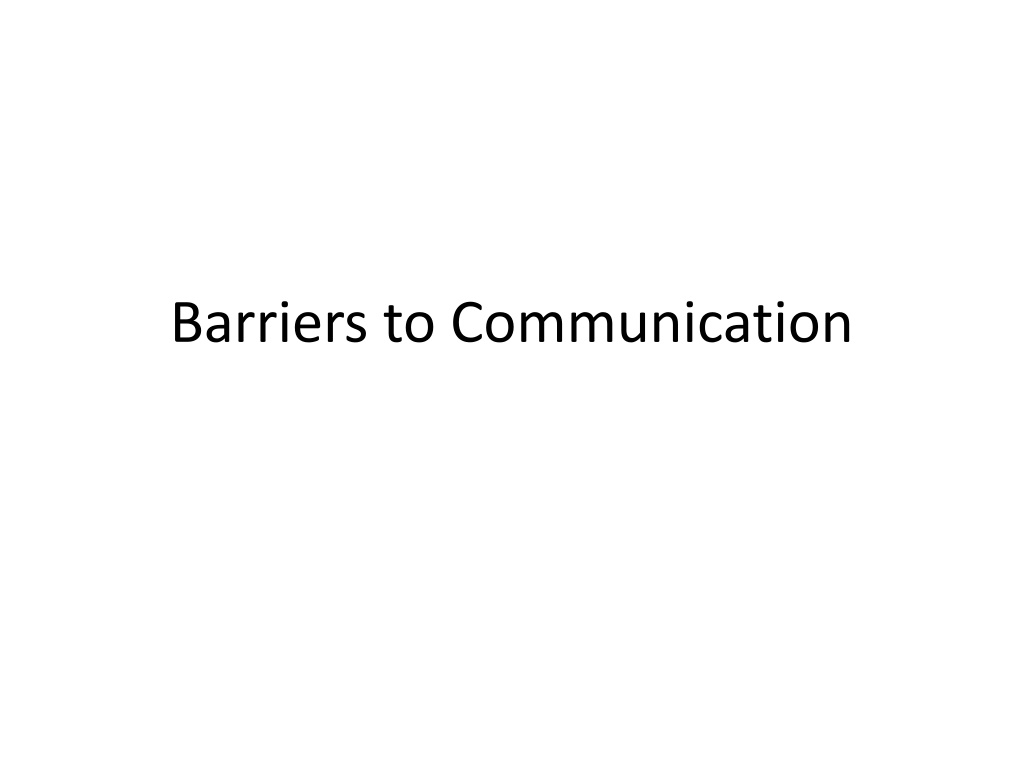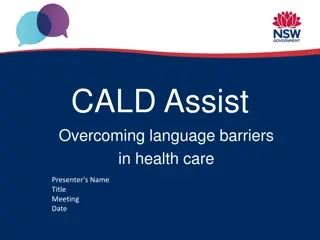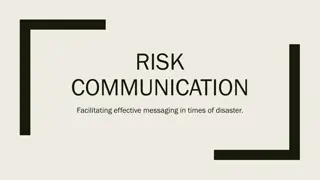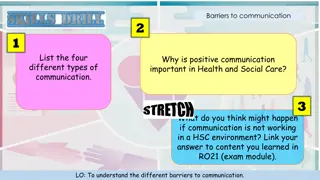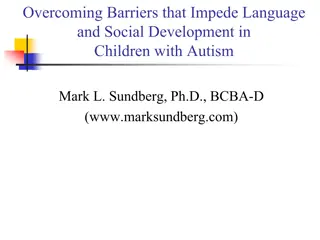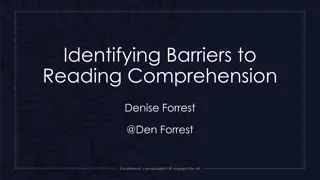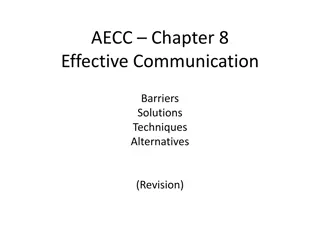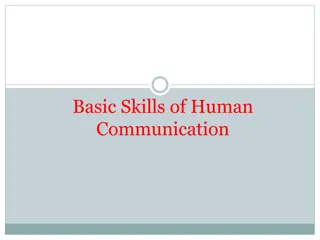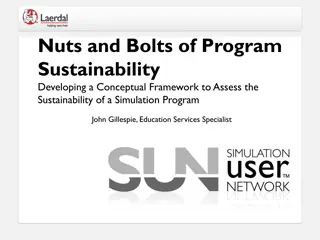Understanding and Overcoming Communication Barriers
Communication barriers, such as physical, linguistic, cultural, mechanical, organizational, and psychological factors, can hinder effective message transmission and understanding. Physical barriers like noise and environmental stress, linguistic barriers including language ambiguity and jargon, cultural differences, mechanical issues, organizational challenges, and psychological influences all play a role in distorting communication. Awareness of these barriers is crucial for successful communication in various contexts.
Uploaded on Jul 25, 2024 | 0 Views
Download Presentation

Please find below an Image/Link to download the presentation.
The content on the website is provided AS IS for your information and personal use only. It may not be sold, licensed, or shared on other websites without obtaining consent from the author. Download presentation by click this link. If you encounter any issues during the download, it is possible that the publisher has removed the file from their server.
E N D
Presentation Transcript
Barriers- any obstacles or difficulties that come in the way of communication. Barriers distort communication. They may be Physical, Linguistic, Cultural, mechanical, organisational or psychological. Physical Barriers: Time and Distance- greater the distance, longer the time for messages to reach and for feedback, greater the chance of distortion. Noise- Creating and responding to such competing stimulus are barriers. Loud music, conversation, traffic noise, etc can distract.
Environmental Stress- High temperature, humidity, poor ventilation, strong glare, extreme climatic conditions come in the way of receiving and responding to messages. Subjective Stress- Sleeplessness, ill-health, effect of medicines lead to difficulties in listening, comprehending and interpreting. Ignorance of the medium- Use of a medium with which the receiver/ sender is unfamiliar would turn the medium into a barrier. Faulty instruments- Defective instruments will affect communication.
Linguistic Barrier Language is ambiguous by nature. Words are mere symbols and may mean more than one thing. Words are understood differently by different people, which leads to misinterpretation. Lack of knowledge of the language. Receiver reacts to not what we said, but to what they thought. Use of jargon. Wrong pitch, tone and register.
Cultural Barriers Understanding of messages will depend on an individual s cultural background and it varies from person to person. Each culture has its own system of values, beliefs and norms of behaviour. Lack of awareness about inter- cultural differences can break down communication. Mechanical Barriers Absence of communication facilities Disturbance with physical transmission of a message (defective gadgets). Mass communication- static on radio, rolling screens, etc.
Organizational Barriers Size of an organization Physical distance between employees Specialisation of jobs and activities Power and status relationships Inter-personal relationships between individuals and groups Prejudices of individuals and groups
Psychological Barriers We all have a frame of reference through which we see people, events and situations. To a large extent this frame of reference is influenced by our own experiences and the cultural environment we have grown up in. As we mature we develop diverse frames which are influenced by our new environment.
Self-image/Pre-conceived notions: We tend to listen attentively and interpret favourably those messages which boosts our image/ beliefs etc and reject or misinterpret those that we feel threaten those beliefs. This leads to communication selectivity- We are selective about sending, receiving and remembering messages. Unjust assumptions Assuming ill or well of others creates barriers to rational interpretation. Assumptions are personal inferences with no specific basis.
Allness/ Closed minds: People assume they know everything and refuse to accept that they could be mistaken. Such people are dogmatic and absolute in their statements. Either-or orientation/ Polarization Over-evaluation of people/ situations/ messages as extremely negative or positive, totally wrong or right. Halo-effect Acceptance of views/ messages of people we like and condemning those of people we dislike or distrust.
Resistance to change New ideas/ changes that do not fit into our views are viewed with hostility and are rejected/ resisted. Snap Reactions Speedy/ Immature responses to the communicated message, pronouncing it favourable or unfavourable. Jumping to conclusions about people and their views. Tendency to evaluate We evaluate, judge to approve/ disapprove the statements of others. Our evaluation is invariably from our point of view and thus could be a misinterpretation. Defensiveness Justifying oneself even when one knows one is in the wrong. We rationalize the mistakes we make.
Status Barriers: Status is related to authority, leadership, prestige, power and knowledge. Status symbols create artificial barriers separating superiors and subordinates, leading to misunderstanding, distrust and suspicion.
